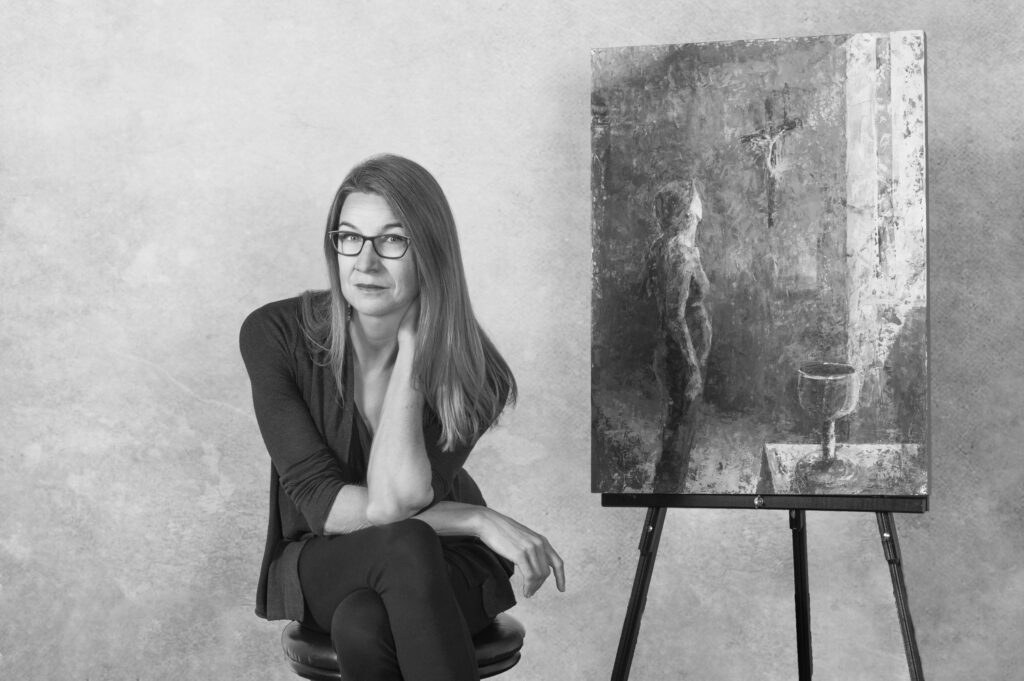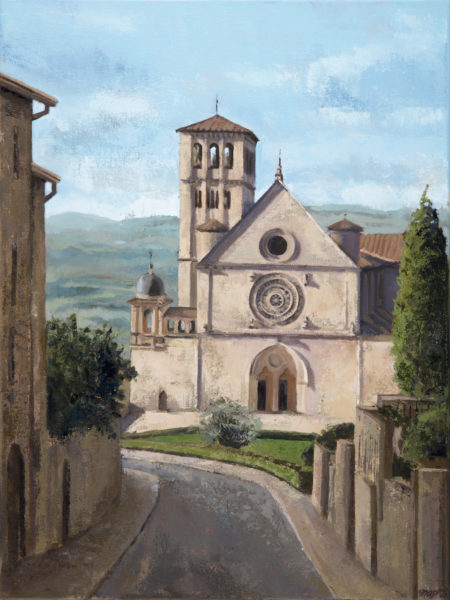
Basilica of Saint Francis of Assisi, Oil on Canvas, 24″ x 18″ ©Michelle Arnold Paine Click to Purchase Prints
I am so excited to unveil this new painting of the Assisi Basilica where Saint Francis was laid to rest. A collector commissioned this painting following the completion of my paintings of the Basilica of Saint Benedict of Nursia. This new Assisi Basilica painting adds to my growing collection of paintings of Umbria. The Italian region of Umbria has a rich history of Catholic saints.
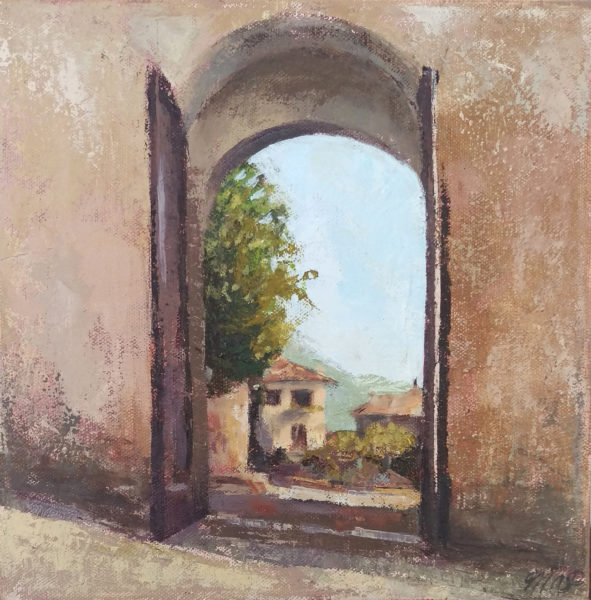
Assisi Gate, Oil on Canvas, 10×10 ©Michelle Arnold Paine 2020 Click to Purchase
Exploring Assisi
This 13th century Basilica in Assisi was one of the first in Italy to use the Gothic style. Frescoes cover every inch of its interior, many of them damaged by dampness, earthquakes and the passage of time, but all waiting to tell a story. Simone Martini, Pietro Lorenzetti, Cimabue, Giott0 – suddenly the names from the art history books come to life. The basilica is built over the tomb of Saint Francis, and consists of an upper church and a lower church.
St. Francis was born and buried in this beautiful hilltop town in Umbria, Italy. The streets wind back and forth and up and down the hillside. Each one holds a little surprise which you will miss if you’re not looking – a window box of petunias, an iron gate to a patio garden, or a narrow staircase from the square.
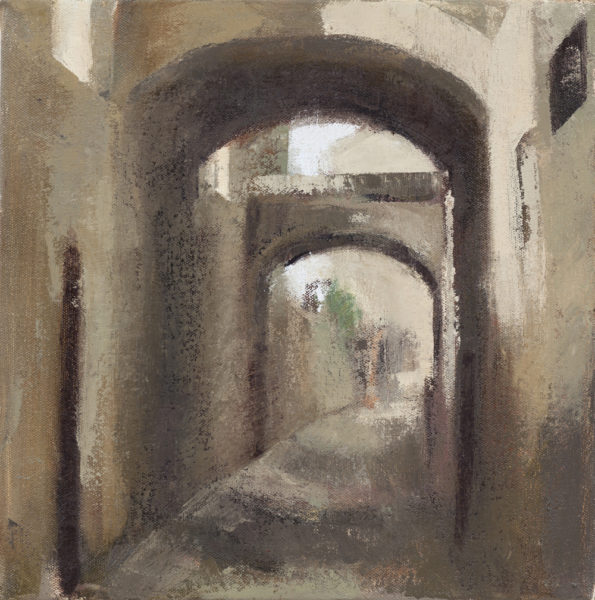
Passage: Assisi, Oil on Canvas 12×12. Click to Purchase Prints
As part of releasing this painting as prints, I am also making available a couple of other paintings and drawings of Assisi inspired by my many visits. Each time I visited I experienced in a profound way the God’s presence and came to know his servants Francis and Clare in a new and deeper way. I accompanied many groups of students to Assisi while working for the Gordon-in-Orvieto program. Unlike some of the other places we frequently visited as part of the academic program, Assisi was always a pilgrimage, not simply a field trip.
Assisi Drawings
In a similar way, I returned to the shapes and images from my explorations of Assisi many times. I felt a sense of mystery in the images of rhythms of dark and light. Through drawing and painting I explored the arches of a single alleyway multiple times. For me it was not simple documentation of medieval architecture. To me these passageways were like my pilgrimages themselves -a path to something beyond what was visible. The repetition of the images became that for me as well, seeking to know deeply in order to explore the un-knowable.
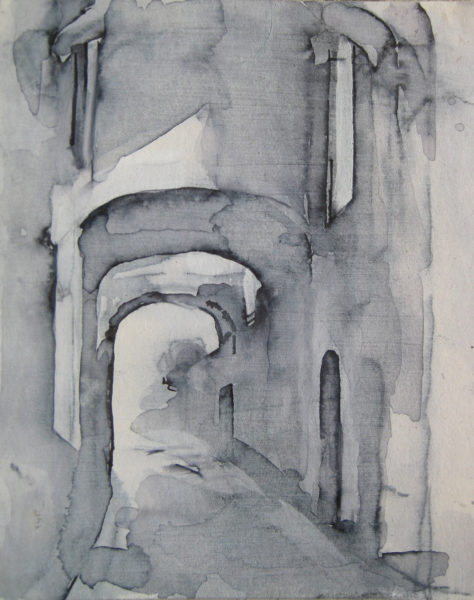
Assisi Passage, Mixed Media on Matboard, 4.5″ x5.5″ ©Michelle Arnold Paine Click to Purchase
Encountering Saint Francis
I had only a vague notion of who St. Francis was before I visited Assisi the first time. Assisi was one of the first cities I visited in Italy, on my third or fourth day in Italy, with a tour of secular college students headed to Florence for a study abroad semester. The following semester, studying in Orvieto, I read G.K. Chesterton’s book St. Francis of Assisi. Reading that, I began to reflect on redemption in a new way. Redemption was not only a taking away of sin, a canceling of debt. Redemption meant a complete and utter renewal and restoration to the marvelous and awe-inspiring creation that God had always meant us to be…
“The transition from the good man to the saint is a sort of revolution: by which one for whom all things illustrate and illuminate God becomes one for whom God illustrates and illuminates all things…” G. K. Chesterton, St. Francis of Assisi
In a time where we aren’t traveling as much, paintings can remind us of our experiences in faraway places. The artists of the famous fresco paintings inside the Assisi Basilica understood that they were to transport the faithful to the time of Saint Francis’ life. In a similar way we can use landscape paintings and paintings of architecture to remind us of experiences with the sacred.

